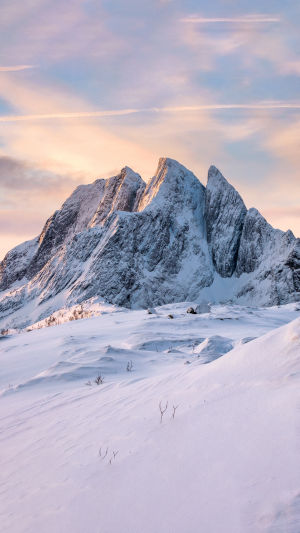Snow-capped mountains stand as magnificent masterpieces of nature, inspiring awe and a yearning for the majestic beauty that our world offers.
This article aims to delve deeper into the enchanting landscape, unique ecology, and the profound impact of snow-capped mountains on humanity, unveiling the magic these towering peaks hold.
<h3>Part One: The Majesty of Snow-Capped Mountains</h3>
Situated at high altitudes on Earth, snow-capped mountains are shaped by a distinctive blend of climate and terrain. These towering peaks act as natural barriers, bearing the mighty force of nature.
At sunrise, the first rays of sunlight grace the mountain summits, casting a golden glow that seems to envelop the entire range in a shroud of mysterious gold dust.
The afterglow paints the snow-capped mountains in a magnificent orange-red hue as the sun sets. This majestic spectacle captivates and enchants, evoking a profound love for their splendor.
<h3>Part Two: The Unique Ecosystem of Snowy Mountains</h3>
The high-altitude regions where snow-capped mountains thrive boast a unique ecosystem where vegetation and animals adapt to the cold climate and steep terrain.
Alpine flora, including rhododendrons and pine, flourish in these environments, giving rise to a distinctive alpine vegetation zone.
Meanwhile, snow leopards and blue sheep, among other creatures, have carved out a niche in this challenging alpine habitat. This specialized ecosystem is a testament to life's tenacity and adaptability.
<h3>Part Three: The Profound Impact of Snow-Capped Mountains on Humanity</h3>
Beyond their role as a natural spectacle, snow-capped mountains profoundly influence human culture, beliefs, and the economy. Across many cultures, these majestic peaks are revered as sacred places and symbolic of spiritual pursuits.
Numerous religions incorporate the tradition of utilizing snow-capped mountains for spiritual practices and prayers. Simultaneously, these mountains serve as the wellspring of vital water resources.
The melted snowwater cascading from these peaks is a precious source for downstream areas, playing a crucial role in local agriculture and residents' daily lives.
<h3>Part Four: The Imperative of Protecting Snow-Capped Mountains</h3>
However, the unbridled expansion of human activities poses a growing threat to snow-capped mountains, including climate change and environmental pollution.
These challenges not only jeopardize the mountains' ecosystems but also pose a significant threat to human societies reliant on the water originating from these peaks.
Consequently, the imperative of protecting snow-capped mountains has become increasingly apparent. The international community must unite to formulate scientifically sound protection policies, ensuring the sustainable development of these majestic natural wonders.
In conclusion, snow-capped mountains are not merely nature's masterpieces; they represent one of the most splendid landscapes on Earth.
Their grandeur, combined with a unique ecosystem and far-reaching impact on humanity, makes them objects of yearning and admiration. While we bask in the beauty of these mountains, it is imperative to recognize the importance of their protection.
Only through collective efforts can we ensure the perpetuity of this magnificent natural miracle, leaving behind a pristine treasure for generations to come.





